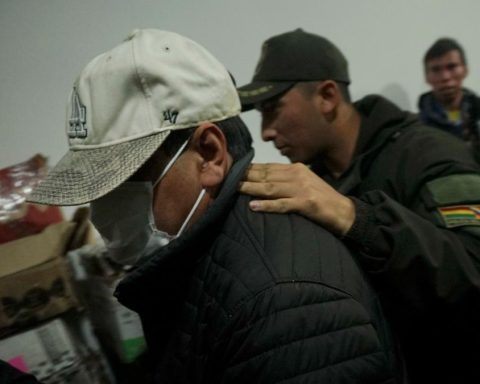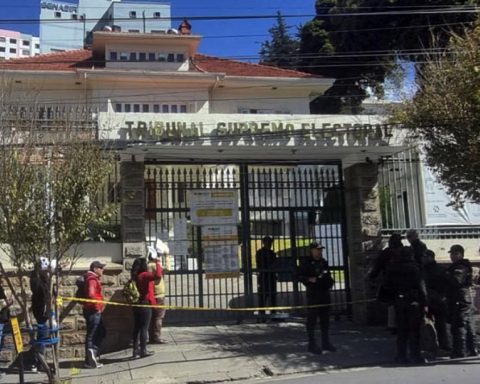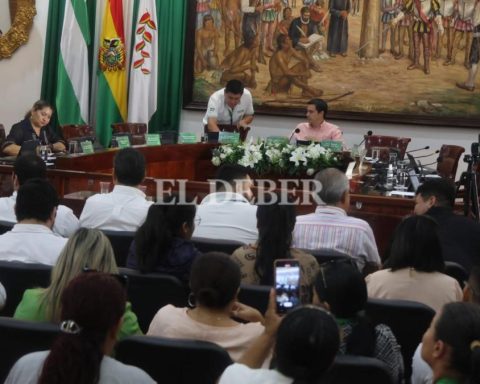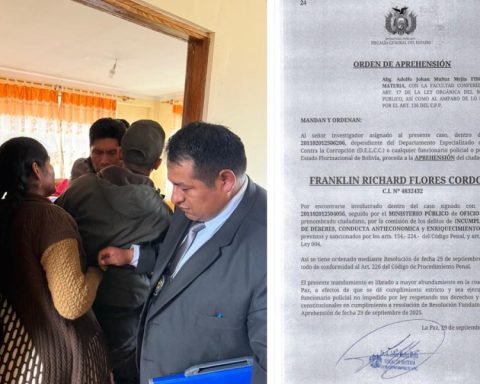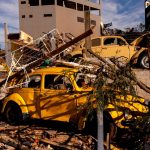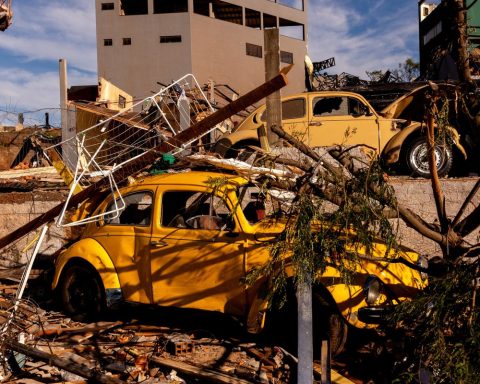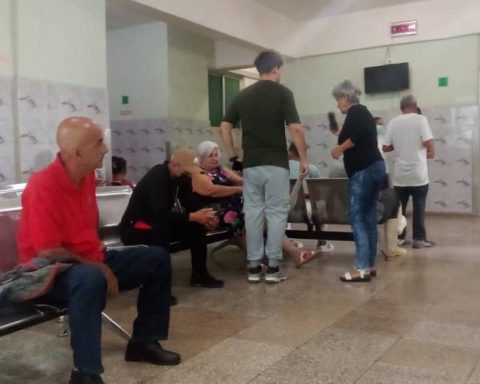Page Seven / La Paz
The rains that occur in the national territory have broken rainfall records in the year in some regions and left at least 12 people dead and destruction of crops, roads and streets in several cities in the country. The rains also caused traffic accidents, bringing the death toll to more than 20.
According to a report by the National Meteorology and Hydrology Service (Senamhi), rainfall in various departments of the country exceeds normal rates for other years, Senamhi forecaster Danilo Pomier told the Unitel Network.
According to the expert, for example, in the city of El Alto, 151.1 millimeters of rainfall was recorded in recent days when the normal rate for other years at this time was 92.5 millimeters of rainfall.
In the case of Oruro, up to now there has been rainfall quantified at 285.3 millimeters when the normal rains were 44.2 millimeters.
In Cochabamba, there was also a considerable increase in the amount of rain that fell. 115.7 millimeters was registered when the expected was only 75.7 millimeters.
In Sucre there was a fall of 214.4 millimeters of rain when the normal for these dates was 98.1 millimeters.
In the case of La Paz, so far there has been a record of 98.2 millimeters of rainfall, the forecaster said. However, rainfall is expected to continue in the coming weeks.
Faced with this situation, the Senamhi issued the orange alert for rains and electrical storms in Potosí, Chuquisaca and Tarija.
“The Senamhi issued meteorological alert No. 61 of orange priority due to rains and thunderstorms,” reported meteorologist José Maldonado.
That means there is a very high threat level. “Unusual phenomena and with a certain degree of danger for the usual activities of human beings.”
He also indicated that the rains and storms will affect three departments: in Potosí, the Altiplano region and the Cordillera will be affected. “The provinces Omiste, Nor Chichas, Quijarro, Linares, Tomás Frías, Saavedra and Sur Lípez”.
In Chuquisaca, the West region of Nor Cinti and South Cinti will be affected as well as the Altiplano region of the department of Tarija. “The western provinces of Méndez and Avilés”.
Death and destruction
According to television media, residents of the Río Seco area of El Alto rescued the lifeless body of a woman who had been dragged down the watercourse after a strong hail on Friday afternoon. The images show the neighbors coming down, helping themselves with ropes to the stream and picking up the lifeless body of the woman.
While in Santa Cruz, two people and their pet, a medium dog, who were trapped in the middle of a flood in the 24 de Septiembre community of the Santa Cruz municipality of San Pedro, were rescued in an operation by the Bolivian Air Force (FAB) and the Aeronautical Search and Rescue Service (SAR).
A video that went viral on social networks shows how rescuers arrive at the scene in a helicopter and save the lives of the two people and the dog, who were drenched by the heavy rain.
According to the official report, the incident occurred last Thursday, when the joint operation between the Vice Ministry of Civil Defense and the FAB was carried out with the support of a helicopter from the Diablos Rojos Air Task Force and the support of the SAR. The heavy rainfall in recent days also caused damage in other regions.
In Cochabamba, at least eight municipalities in the department registered floods due to the rains of the last days, according to the report of the Government’s Risk Management Unit.
The sectors most affected were the regions of the Southern Cone, Valle Alto and Valle Bajo.
“We see overflows of rivers, canals, floods in various municipalities, we start with the Southern Cone, we have the part of Mizque, Omereque. In Valle Alto: Punata, Cliza, Tolata, Arani. In the upper valley, Sipe Sipe and Quillacollo in the Cotapachi sector ”, said a technician from the Cochabambina Government.
These floods have been occurring since Thursday due to the high volume of rainfall, causing water to accumulate and enter homes and crops.
Photo: APG
The Government pointed out that all these emergencies have been dealt with from the Governor’s Risk Management Unit in conjunction with the municipalities and that the personnel, machinery and technicians, who are doing the evaluations, have already been sent.
“Military personnel were also sent, with soldiers that the Government has trained for emergencies and natural disasters, who have collaborated with humanitarian support in Tolata and Cliza,” added the technician.
So far there are two registered houses completely affected by floods, one in Cliza and the other in Sipe Sipe.

Photo: APG
In Santa Cruz, the rising Piraí River flooded the Hardeman area, in the municipality of San Pedro, forcing residents to evacuate the area early yesterday morning.
“At midnight, everything began to fill up and we began to take out all our things and we couldn’t sleep and the situation is serious because we don’t have anywhere to sleep, some things we were able to take out, others stayed inside,” said a neighbor.
In some areas, the water is more than a meter and a half deep and the streets, turned into rivers, are traveled by residents in canoes, trying to rescue their belongings.
In La Paz, between the 24th and the early morning of December 25th, workers and technical personnel of the Mayor’s Office attended at least 50 emergencies due to the recent rains, the most relevant of the cases being the overflow of the Huayllani River in the South zone, which It caused two minor road siphonings, the official municipal news agency reported.
“Last night (Friday), we attended the Huayllani River, where moderate to heavy rain was recorded, an intense rain has generated these pulsating waves of the river,” reported the Director of Risk Prevention of the Mayor’s Office of La Paz , Juan Pablo de La Fuente.

Photo: AMN
The alert on the Huayllani river was reported at 11:30 p.m. and heavy machinery was immediately taken to clean up the material that obstructed the section that is upstream from the bridge, the municipal official said. He added that until six in the morning they lifted four cubic meters of stones and mud that were dispersed by the force of the pulsating waves.
De La Fuente assured that the natural event was mitigated by the previous cleaning they did in the area of the Huayllani river square, where the flow of the Achumani river converges.

